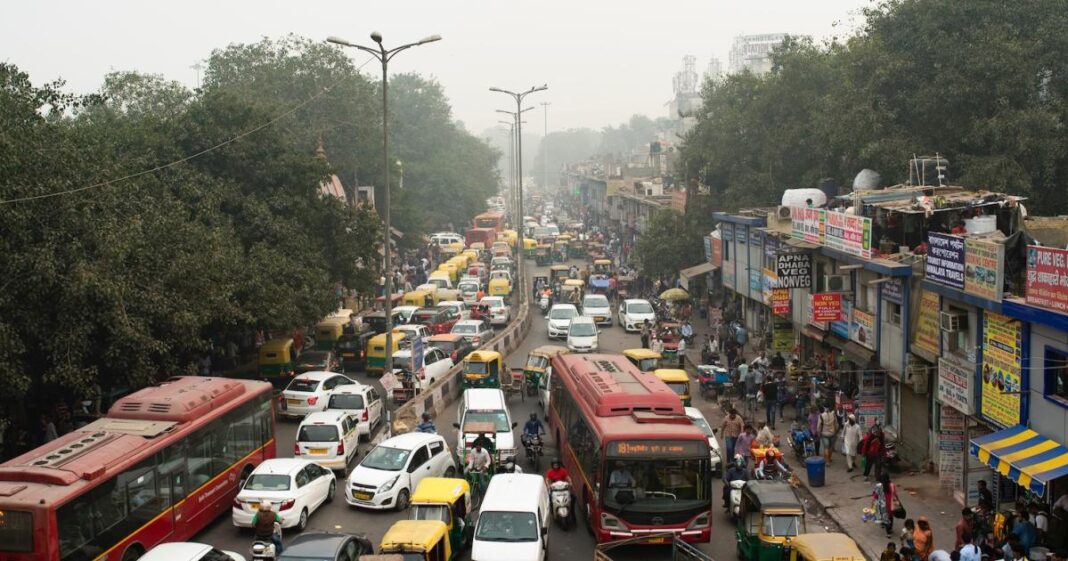Electric vehicle (EV) adoption is soaring: sales could reach 17 million in 2024, accounting for one in five cars sold worldwide, according to the International Energy Agency’s Global EV Outlook 2024.
That growth, however, masks troubling trends. Nearly all EV sales this year will be in China (60 percent), Europe (25 percent) and the US (10 percent). And many countries, particularly those in the Global South, will be left with the remnants.
As I previously reported, as highly developed economies electrify, they offload used internal combustion engine (ICE) vehicles onto emerging economies.
In the 2023 report New But Used: The Electric Vehicle Transition and the Global Second-hand Car Trade, authors Matteo Craglia and Andreas Kopf highlight Norway as a global leader on electrification – 94.8 percent of the country’s new registrations in 2022 were EVs or hybrids. In the same period, however, exports of ICE vehicles from Norway have risen dramatically. Of those, Kopf said in an interview, “emerging economies will get the bottom of the barrel; the poorer quality cars that are not roadworthy and have significant air pollution problems.”
Pushing ICE vehicles off on developing countries is a form of “carbon exporting” – reducing greenhouse gas emissions in the developed world while effectively shifting them to emerging economies.
Tackling this problem is a thorny challenge; there’s not that much policymakers can do to prevent the sale of ICEs in other countries. Automakers, though, can play an important role – and a handful have started to do so.
The next wave
A much larger wave is forming on the horizon: China.
EVs could reach a market share in China of 45 percent this year. “While its fleet electrifies, China will have a huge surplus of ICEs, which it will be very motivated to make money with through exports,” the authors told me.
By 2050, China could be exporting as many cars as all other OECD economies combined.
The resulting gas-guzzler torrent means that, on current trends, just 40 percent of the vehicle fleet in sub-Saharan Africa will be electric by 2050. That’s the best case outlook. In other scenarios, that figure could be well below 10 percent.
Passenger Car Stock by Powertrain and Origin, Middle East and North Africa (MENA) and Sub-Saharan Africa, 2020-2050

“This indicates that as the developed world rapidly electrifies, there will be a large exodus of unwanted conventional vehicles moving toward the emerging economies, creating a glut,” said Craglia.
A new model for recycling used cars
To avoid the Global South becoming a dumping ground for used ICE vehicles, part of the solution must be a normalization of scrapping them sustainably.
The EU’s proposed End-of-Life Vehicles Regulation provides a starting point. The regulation is designed to ensure that vehicles are designed with circularity in mind and to place responsibility on manufacturers to do so. Although the new rule aims to “ensure that only high-quality, technically fit European vehicles will be exported,” it only covers “irreparable” vehicles, meaning it will do little to stop the flood of driveable ICE’s heading to emerging economies.
Still, some manufacturers have begun to design vehicles with circularity in mind. In 2022, for example, Renault launched The Future is NEUTRAL, which aims to “become the leader in industrial and European scale of the closed-loop automotive circular economy”.
The Future is NEUTRAL is developing novel ways to recover materials, metals and plastics from existing cars to recycle them into the production of new vehicles. The company says that in 2023, it generated nearly $1 billion in revenue.
As things stand, new vehicles are made up of only 20-30% of recycled material, making the whole operation laborious and expensive. But with the help of its circular economy factory, Refractory, in France, Renault claims that figure could reach 85 percent.
If turning old vehicles into new ones becomes profitable, it will disincentivize manufacturers from allowing old models to be shipped off to the Global South.
All of these other companies are losing market share because they’re not providing competitive products that meet the local needs
The right cars
At the other end of the supply chain, in developing economies, there is ample opportunity to create an EV market that would reduce the demand for ICE imports. They just need the right vehicles.
In the US and Europe, electric cars are usually marketed as luxury goods, costing upwards of $30,000. Producing less expensive models would increase the uptake of EVs in the developing world..
“When you look at the future growth of vehicle fleets, it’s dominated by emerging economies … so I think there is an opportunity to be more creative in terms of the products you’re selling to these countries to better fit their needs,” said Sebastian Galarza, Executive Director of Centro de Movilidad Sostenible, a nonprofit supporting the decarbonization of transport in Latin America.
Right now, low-cost Chinese producers like BYD dominate this space, offering affordable models well below prices for comparable European and US vehicles. Bus fleets in the capitals of Chile and Colombia, once dominated by European brands, have been replaced by electric Chinese models.
“All of these other companies are losing market share because they’re not providing competitive products that meet the local needs,” Galarza says. “Why would anyone buy a Volvo bus for twice the price when … the other model is going to work fine?”
Meanwhile, EV sales in Thailand quadrupled year-on-year in 2023 to reach 10 percent, according to the IEA. In Vietnam, car sales contracted in 2023, but EV sales expanded to 15 percent of the market.
Which company has just begun construction of an EV plant in Thailand? BYD.
Preventing the Global South from being stranded in the ICE era will require manufacturers to increasingly use old car parts to build new ones -– and to make EVs that emerging economies actually need and can afford.
